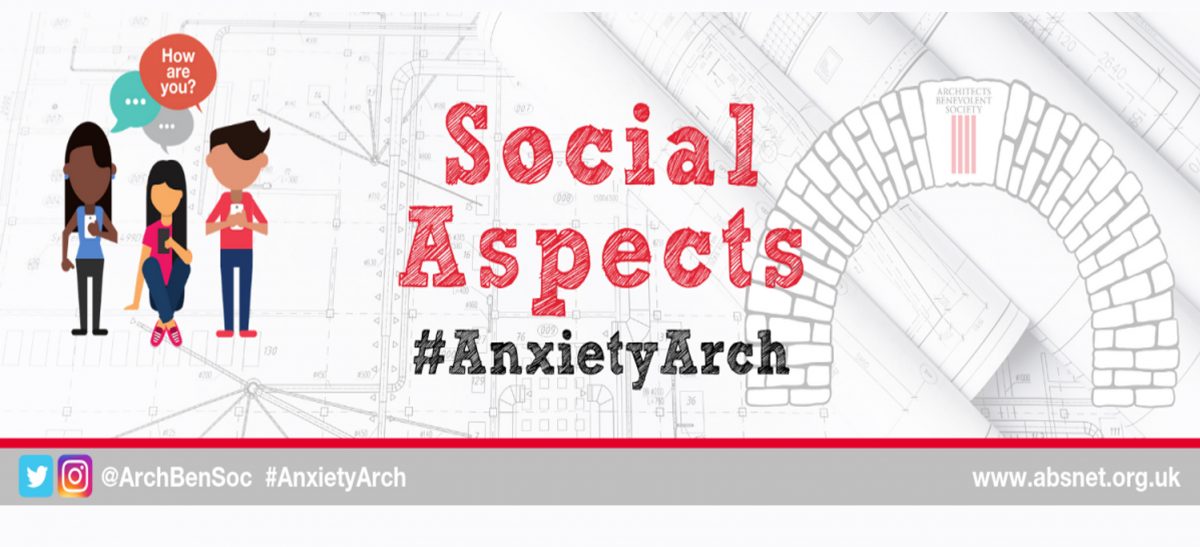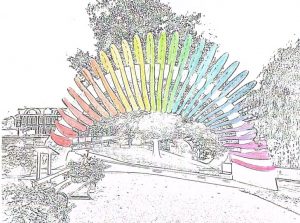Home | Our news & views |
Neurodiversity and Autism – Guest post by Angela Heeley

Home | Our news & views |

Angela Heeley from Heeleys Architects (on Twitter as Autistic Architect, you can follow her using @aheeleyRIBA) has written an amazing and informative article about autism. Angela is autistic and writes about her experience in life and within the architectural world. Discussing the extent to which autism affects social communication and high anxiety rates in the architectural profession, Angela explains the meaning of autism as a ‘spectrum condition’ and shares with us the importance of focusing on understanding neurodiversity.
“For the ABS Mental Health theme of “Social Interaction” I am delighted to write about Autism.
But first I should explain “Neurodiversity”.
Neurodiversity is the concept that there is a natural variety of human brain-types, all of which are ‘normal’. Neurodivergence (variation from the majority ‘neurotypical’) can include Dyslexia, Dyspraxia, Dyscalculia, ADHD, and Autism. These are not mental illnesses nor learning disabilities, but neurological differences, and can affect the way a person works or interacts with other people. Here’s a great article which explains the background to this.
More than 15% of the UK workforce are neurodivergent, and the accommodation of needs arising from neurological differences is covered by the Equality Act. The Chartered Institute of Personnel and Development reported last year that “1 in 10 HR professionals say their organisation is now focusing on neurodiversity at work“. Acceptance that neurodivergent people are a valuable part of the workforce is supported by a number of recent initiatives, such as the ACAS ‘Neurodiversity in the Workplace’ guide.
An important message is that neurodivergent people are not broken versions of ‘normal’ people. This is especially important for children to embrace, and more than 140,000 school children across the world have signed up to engage with Neurodiversity Celebration Week in May.

Autism
This month the Architects Benevolent Society’s campaign on mental wellness is focussing on Social Interaction. I am autistic, and I wonder to what extent autism, which affects social communication, has a bearing on the high rates of anxiety in the architectural profession.
Autism is a ‘spectrum condition’ which means that individuals vary widely in their characteristics. My own communication difficulties include an inability to recognise different people (including my own family), a ‘moderate’ inability to recognise facial expressions (I can perceive happy/sad but not if someone is pretending) or body language, and a tendency to take things literally. I have learned over many years that people prefer longer sentences, and so I add unnecessary filler words to what I say so as not to offend with my bluntness. I have other difficulties which include sensory sensitivity (to sound, temperature, odours, light), and some positives including savant skills in music, memory, and spatial awareness.
While it is generally cited that 1% of the population is autistic, research suggests that the true figure is between 2% and 3%. There is a whole generation of autistic adults who missed out on diagnosis as children because they learned to ‘mask’ their autistic traits. Many are now being diagnosed in adulthood and find this brings an explanation for a lifetime of difficulties and allows them to move forward with positivity. If there are undiagnosed autistic people, then this would go some way to explaining the high prevalence of anxiety, stress, and anxiety-based depression in the architectural community. Since the architectural profession is heavily reliant on what might be described as ‘autistic traits’, such as working with systems, and applying rules, it would be no surprise if autistic people are more prevalent than in the general population. Perhaps many times more prevalent.
Architecture is a highly technical profession which requires interpersonal communication to sell the service, and to work within a team setting. While autistic people are often well-suited to the technical side (with many of us having a skill set which includes a fantastic eye for detail and brilliant focus and concentration), we communicate in a different way from neurotypical people, and difficulties in this area can be problematic. When networking and social skills are required to gain new projects and keep income flowing, building an architectural practice as an autistic person can be difficult. Teamwork relies on good interpersonal relations and misunderstandings can be both stressful and upsetting. The masking of autistic features to pass as neurotypical is exhausting, leads to mental illnesses such as anxiety and depression, and can be unsuccessful and humiliating. A recent study linked the masking of autistic traits with suicide, and this goes some way to explain why the suicide rate of autistic people is nine times that of the general population.
There are many autistic people in other professions. I know autistic doctors, lawyers, and engineers, but due to the stigma attached to this condition there are very few who are open about their diagnosis. While some types of neurodiversity (such as dyslexia) are acceptable to society, an admission by a professional person that they are autistic, can undermine confidence in their competence and seriously affect their career prospects.
While campaigns to raise awareness of mental illness have done a great deal to break taboos around this subject, unfortunately, acceptance of autism (which is not a mental illness) has some way to catch up and being open about a diagnosis is not an option for many people, who need to keep up an act of neurotypicality to protect their livelihoods.
Some careers have organised support, such as the National Police Autism Association, and the Institute of Civil Engineers Benevolent Fund pages on autism. TUC Wales has prepared an Autism Awareness in the Workplace toolkit which employers will find useful.
Are you autistic?
People are either autistic, or not. The Autistic Spectrum is an array of characteristics which vary between individuals, and not a line that goes from ‘not autistic’ to ‘very autistic’. There’s a great explanation here which avoids negative and pathologising language.
For an official diagnosis, in the UK, a GP can make a referral to a specialist, or an individual might self-refer to a private diagnostic service. The benefit of a diagnosis is that it can give an understanding of a lifetime of difficulties, give insight into how to move forward with appropriate self-care, and avoid a person being misdiagnosed with a mental illness which they do not have. For those wishing to connect with other autistic people, there is the global #ActuallyAutistic community which is based on Twitter.”